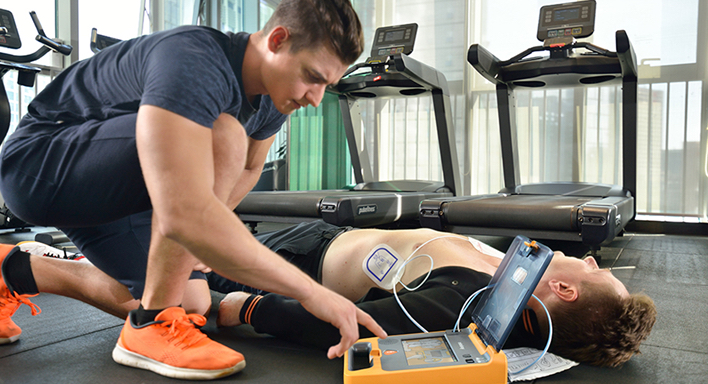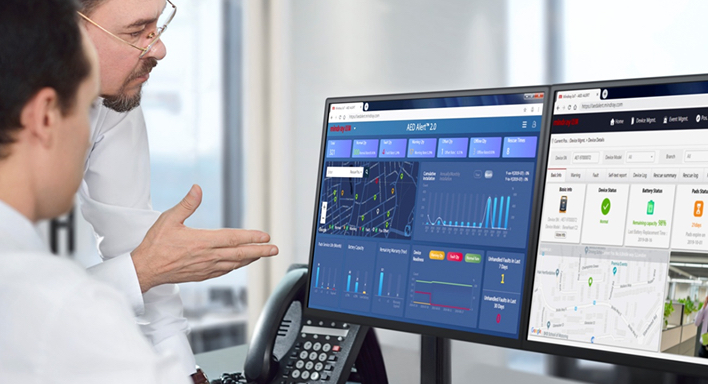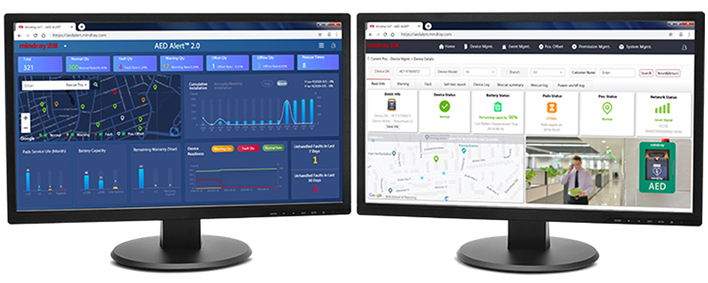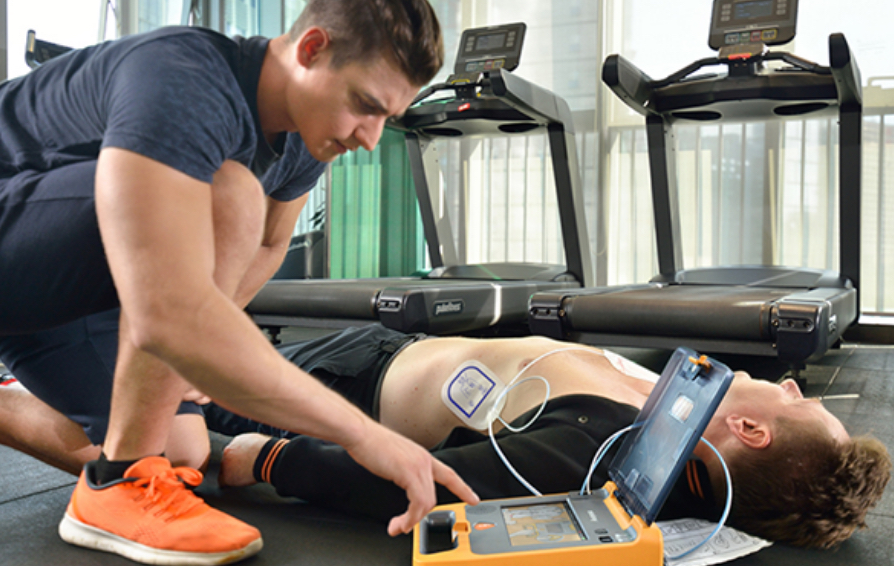Normally, your heart beats to supply blood to all parts of your body. This happens with the contraction and expansion of the various chambers of the heart in a coordinated and periodic pattern. These heart chambers can pump blood because of its own electrical control system (mostly the SA node, which generates the electrical impulse). The electrical impulse causes the contraction of the heart chambers in a rhythmic pattern called the sinus rhythm.
There are, however, cases where this intrinsic electrical system of the heart malfunctions to beat either irregularly (arrhythmia) or not at all. While some arrhythmias may cause an inadequate supply of blood, others could result sudden cardiac arrest (SCA). This means the heart fails to pump blood effectively and can ultimately lead to death. An estimated 250,000 deaths are said to be caused by SCA in the United States every year [1].
One primary arrhythmia that is associated with SCA is the 'ventricular fibrillation'. In ventricular fibrillation (VF), the ventricles do not contract normally; instead, they make erratic, uncoordinated movements and do not pump blood efficiently. It can cause death just within 10 minutes of its onset.

Can ventricular fibrillation be reversed?
It is a relief to know that ventricular fibrillation can be reversed. Caude Beck, who was a professor of surgery at the Case Western Reserve University, first applied the technique of defibrillation on a human in 1947. It was used on a 14-year old boy who suffered from a congenital heart defect and required a surgical procedure. Defibrillators in ambulances were later introduced in 1960 [2].
The defibrillator is a helpful device for reversing this dangerous heart condition by administering high-electric shock through the chest wall to the muscles of the heart. There are usually two types of defibrillators: manual external defibrillators which are typically used by medical professionals in hospitals or ambulances, and automated external defibrillators (AED) which are mostly for public access.
Using advanced algorithms, AEDs would advise the user whether defibrillation is necessary as well as administer the needed level of shock. Mindray offers very durable and affordable AEDs with accompanying accessories, which can be used, on both old and young alike.
What is an AED tracking system?
The use and implementation of AED have evolved over the years. Numerous countries have come to realize how critical it is to have this device available and accessible to the public; hence, different programs are being put in place to manage the distribution and effective usage of AEDs.
Just like most other health programs similar to AED, such as diabetes programs, cervical cancer programs, etc., an effective AED management system is required. Also, just like other emergency health equipment like emergency oxygen, first aid stations, and fire alerts that use a tracking system, AED also makes use of tracking systems. This tracking system, amongst other things, is meant to track and manage the AED devices to ensure that they are functioning effectively and maintained regularly.
Besides the traditional way of manually checking the maintenance schedules of the AED devices, the use of a smart AED tracking software such as Mindray AED-Alert 2.0 System is encouraged to track the location of the devices and effectively monitor important status information.

Do you need a tracking system for AED?
AED tracking system is needful in so many ways. AEDs are vital for increasing survival rates in cases of sudden cardiac arrest; however, just like every other computerized device, they sometimes experience malfunctions. It could be a case of low battery, some other problem with its other components, or even expiration of any of its accessories.
Unless a tracking system is being put in place, a user may not be able to figure this out on time. This would mean a delay in administering a shock to a patient that just had a sudden cardiac arrest. With even a minute of delay, the chances of survival reduce drastically.
With the AED tracking system, the certified AED managers can log in to view details of their AED devices using their PC. They can also check on the expiry date of the devices or the accessories as well as keep track of maintenance schedules.
The features of Mindray’s AED-Alert 2.0 System include:

● An AED dashboard for online management of all AED devices
● Summary of detailed information of each AED device, including location and self-check logs
● Automatic alerts via email when any of the AED device is removed from the predetermined location
● Notifications on AED components or accessories that need to be renewed
● Complete documentation of AED management data on the cloud server
● Automated tracking and direct data transfer via built-in 4G module
As an AED program initiator or a buyer of a fleet of AEDs, you definitely need an AED tracking system like the Mindray AED-Alert 2.0 to track and manage your AED devices effectively. The AED-Alert 2.0 tracking system forms a comprehensive remote AED management solution, ensuring that you have full visibility of all vital information pertaining to your AED devices. It offers secure access with automated notifications, and with it, you have all you need to track your AEDs at your fingertips.
References:
[1] Google Patient, 2013. Defibrillator location tracking device [Online]. Google Patient. Available at: https://patents.google.com/patent/US9026147B2/en (Accessed: 20 January 2020)
[2] MyHeartMap Challenge. What Is an AED? [Online]. MyHeartMap Challenge. Available at: https://www.med.upenn.edu/myheartmap/aed.html (Accessed: 20 January 2020)
